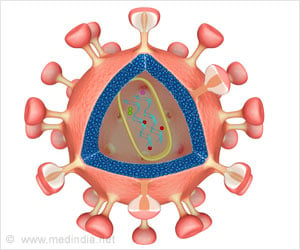
Dr. Cameron Abrams, a professor in Drexel's College of Engineering and a primary investigator of the project, said that while several molecules that destroy HIV have recently been announced, DAVEI is unique among them by virtue of its design, specificity and high potency.
A team co-led by Abrams and Dr. Irwin Chaiken in the Department of Biochemistry and Molecular Biology in Drexel's College of Medicine, and including Dr. Mark Contarino and doctoral students Arangassery Rosemary Bastian and R. V. Kalyana Sundaram, developed the molecule assembled from pieces of other molecules and engineered for a specific purpose, in this case to fight HIV.
The idea behind DAVEI was to design a molecule that hijacks the virus's fusion machinery, the tools it uses to attach to and attack a healthy cell, and tricks the virus into destroying itself.
The team designed DAVEI from two main ingredients. One piece, called the Membrane Proximal External Region (MPER), is itself a small piece of the fusion machinery and interacts strongly with viral membranes. The other piece, called cyanovirin, binds to the sugar coating of the protein spike. Working together, the MPER and cyanovirin in DAVEI 'tweak' the fusion machinery in a way that mimics the forces it feels when attached to a cell.
The research is set to be published in the October edition of the American Society for Microbiology's Antimicrobial Agents and Chemotherapy.
Advertisement













